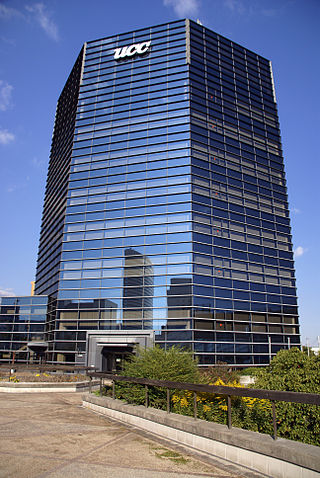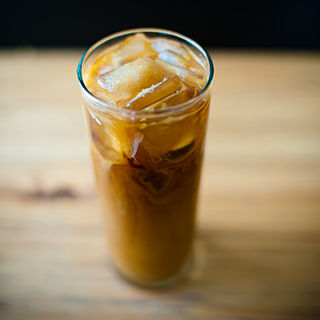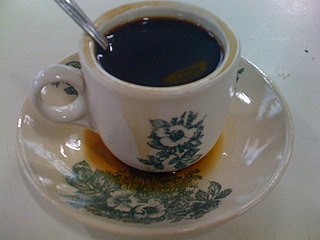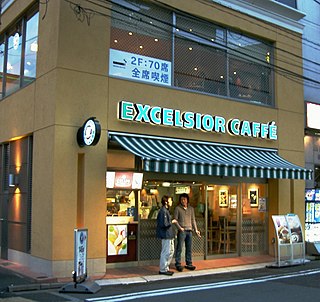History

Coffee first arrived in Japan via Dutch traders in 1700. [3] The first shop opened in 1888 and was called Kahiichakan. [3] It lasted five years before going bankrupt. In 1933, Tadao Ueshima founded Ueshima Tadao Shoten in Kobe. [4] Ueshima has since been dubbed the "Father of Coffee in Japan". During World War II, the Japanese established a ban on coffee imports until 1950. [3] In 1969, Ueshima redeveloped and mass-produced the canned coffee making it a commodity to be consumed anywhere. [4] Some canned coffee brands include "Boss (produced by Suntory), Georgia (produced by Coca-Cola), Nescafe (produced by Nestlé), and Roots (coffee product) (produced by Japan Tobacco)". [3]
Following its brief stint in the Meiji period, coffee wove its way back into the Japanese markets in the 1960s. During World War II coffee import was banned in Japan as they were in conflict with the influential west. [3] To measure its growth in consumption, Japan imported 15,000 tonnes back in 1960. Today, the numbers total over 440,000 tonnes. [3] Japan's spike in coffee consumption can be linked to its fascination with western cultures leading to large investments. Mr. Ueshima also played a large role in the establishment of the All Japanese Coffee Association in 1980. [4] In the same year, Doutor Coffee opened the country's first chain furthering the consumption and turning coffee into a valuable economic resource. [3] Part of Doutor's success was its on-the-go environment. This facilitated and encouraged people to take their coffee with them to work and to school.
Types of coffee shops

Smaller chains battle to stay afloat by being known for their individual traits. For example, cafe Renoir is recognized by its plug-in and wireless access for customers. [3] Another factor is smoking and as some customers appreciate a smoke and coffee, others despise the thought of smoking altogether. Smaller shops can better cater to the locals in terms of allowing smoking while larger chains like Starbucks, must follow company rules and ban it. Bigger chains like McDonald's and Starbucks are rooted in the west and have pushed themselves upon the growing coffee market in Japan through storefronts and stands.
Big or small, they both have been heavily influenced by the west. Smaller chains like Boss and Roots enlisted the help of prominent Americans Tommy Lee Jones (Boss) and Brad Pitt (Roots) to be their spokespeople and advertise for them. Bigger Chains like Starbucks emerged to capitalize on the new booming coffee industry in Japan. The first Starbucks opened in Ginza, Tokyo, in 1996. In 2005, they partnered with Suntory to sell their own canned coffee. Over time, Starbucks has grown to over 1,000 Japanese shops clustered around the cities. [3] In response, McDonald's McCafe has sprouted up where instead of having a whole McDonald's store there is simply a stand selling McDonald's coffee. These standalone shops were officially established in 2007 and target coffee and small on-the-go treats. Tully's is a third foreign enterprise stemming out of Seattle, Washington. Its first shop opened in 1997, and grew to 513 by 2014. [3]
Nowadays, convenience stores are taking up an increasing chunk of the Japanese coffee market. Popular convenience store, Seven-Eleven, for example, currently sells 1.1 billion take-out coffees annually. [5]













